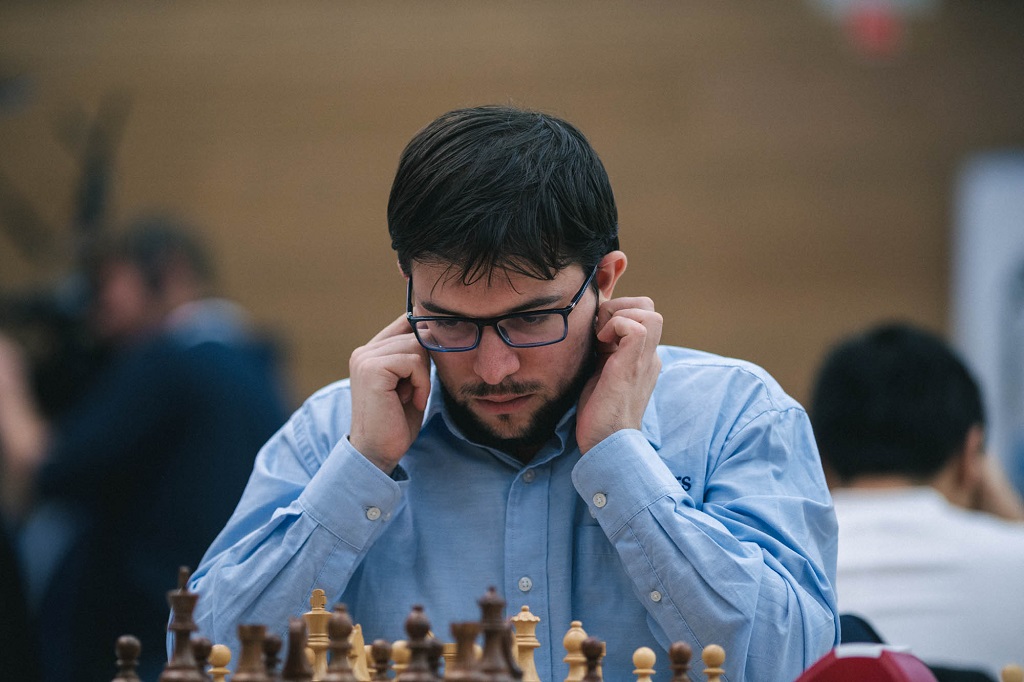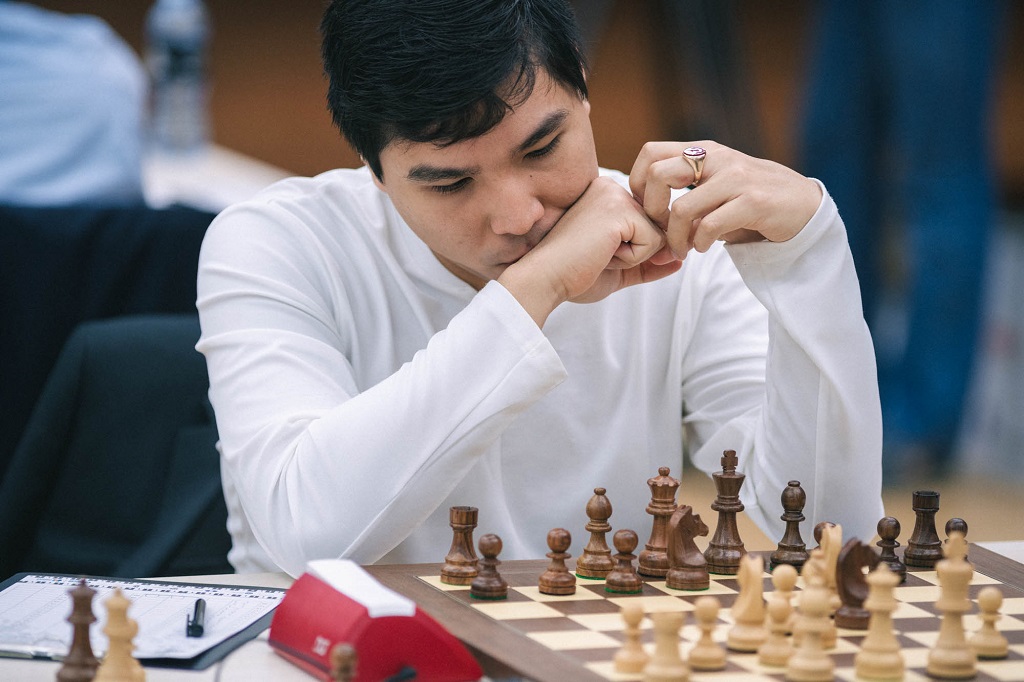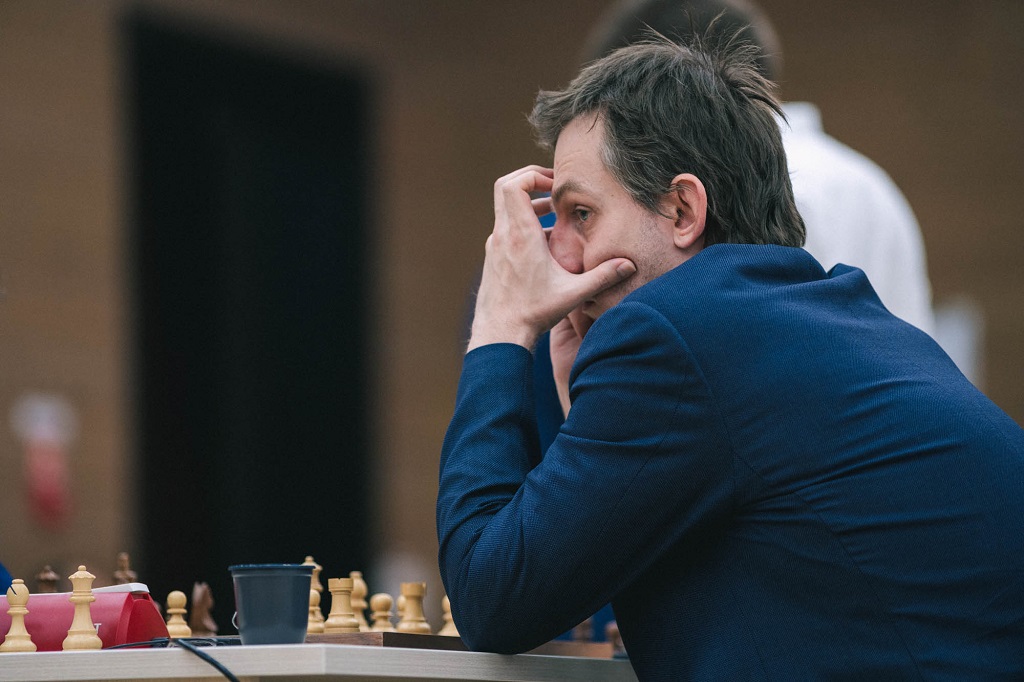


 The FIDE World Cup is taking place in Khanty-Mansiysk. It is a seven-round knock-out event for 128 players, with a total prize fund of US$ 1.6 million and a first prize of US$ 110,000. The matches consist of two classical games with a time control of 90 minutes for 40 moves plus 30 minutes for the rest of the game, with an increment of 30 seconds per move. The finals consist of four classical games. Full schedule.
The FIDE World Cup is taking place in Khanty-Mansiysk. It is a seven-round knock-out event for 128 players, with a total prize fund of US$ 1.6 million and a first prize of US$ 110,000. The matches consist of two classical games with a time control of 90 minutes for 40 moves plus 30 minutes for the rest of the game, with an increment of 30 seconds per move. The finals consist of four classical games. Full schedule.
The four players that now have a 1:0 advantage at the round of 16 of the World Cup got their victories with the white pieces. Alexander Grischuk and Nikita Vitiugov squeezed their opponents after getting a small positional edge; Maxime Vachier-Lagrave got a comfortable position out of the opening, won a pawn and then the game against Peter Svidler; while Jan-Krzysztof Duda was an exchange down when Jeffery Xiong faltered, allowing the Polish to play a deadly break in the centre.
Ding Liren and Ian Nepomniachtchi also started the round with White, but despite getting good positions could not break the defences of Kirill Alekseenko and Yu Yangyi. Le Quang Liem v Levon Aronian and Shakhriyar v Teimour Radjabov were rather short draws.
Aronian and Nepomniachtchi certainly have big hopes for this tournament, as anything other than a ticket to the Candidates would probably be considered a failure. Ding, in the meantime, is most likely qualified by rating, but he is also the top seed and has been showing some ambitious chess throughout the year. Will they push hard for a win on Saturday? Also, will the Azeri teammates continue their drawing streak in their head-to-head classical encounters?

Levon Aronian has participated in the last four Candidates Tournament | Photo: FIDE
After collecting a big scalp in the previous round by knocking out Sergey Karjakin, Nikita Vitiugov has kicked off the round of 16 with an optimal result — a clean win with White against Wesley So, one of the most solid players in the elite. The American defended with the Petroff and accepted to go into a line that has not fared well for Black in the past:
So has just gone for 10...f5, reaching a position which has been seen eight times in the past, with the database showing four wins for White and four draws. Vitiugov's play from this point on was nothing short of masterful, creating small threats one after another until gaining a pawn in the middlegame:
White slowly coordinated an attack against Black's queenside with his rooks, bishops and queen and now the time to cash in has come — 32.♗xb5 ♜xb5 33.♖axb5 ♝xb5 34.♖xb5 gxf4 35.♕a5:
White is threatening to go ♖b7, creating a passer on the b-file. With this threat in mind, Black should have gone for 35...♛c6 — a passive defensive manoeuvre — instead of 35...♛xe5, planning to get counterplay against the king. After the pawn capture, the game continued 36.♖b7 ♜xb7 37.axb7 and the passed pawn ended up giving Vitiugov a well-deserved victory.

Wesley So is completely capable of bouncing back in game two | Photo: FIDE
France's number one, Maxime Vachier-Lagrave, is looking to improve on his 2017 World Cup performance, when he was dramatically eliminated at the semi-finals by Levon Aronian. His current rival, Peter Svidler, also had a heartbreaking experience in a previous edition though, as he lost a thrilling final match against Sergey Karjakin in 2015.
The Frenchman was interviewed after his win, and explained that his opponent had incorrectly pushed too hard for simplifications, thus getting an inferior position which eventually left him a pawn down. True to his nature, Svidler rejected to struggle in a passive defence by giving up a bishop:
The eight-time Russian champion is planning to lift his rook and go for an attack against the king after White's g-pawn captures his bishop. What Svidler had missed, according to Vachier-Lagrave, is that after 34...♛xe4 35.gxf4 ♜c6 White has 36.f5 gaining a key tempo.
The g6-square is covered, and after 36...♛xf5 37.♗d6 White can always defend against a check on the g-file with ♗g3. Svidler tried a couple of tricks but had to accept defeat a move after the time control.

Maxime Vachier-Lagrave and Peter Svidler discussing their game | Photo: FIDE
Jan-Krzysztof Duda has so far shown one of the strongest performances in Khanty-Mansiysk. The Polish star has a 6 out of 7 score after this victory, having collected a perfect 4 out of 4 with the white pieces. His win over giant-killer Jeffery Xiong was not completely smooth though, as Duda saw it necessary to give up an exchange after having mishandled a good position out of the opening.
Duda had a dominant knight in compensation, and Xiong was the one making the last mistake:
Black's previous 34...g5 allowed 35.e5 and the queen and knight duo are too much to handle. There followed 35...dxe5 36.♕a7, threatening mate on g7 while the knight controls the rooks' blockading square on c7. And after 36...♛h6 White has 37.d6, creating further threats. Xiong played five more moves before resigning.
Leinier Dominguez came to his round of 16 match-up after having beaten Wang Hao in a long play-off battle — he twice bounced back from losses and only qualified after winning a lengthy rook endgame which was drawn at the outset. Alexander Grischuk, on the other hand, dispatched Xu Xiangyu with a categorical 2:0 victory in the classical phase. This might explain why the Russian outlasted his opponent in their 88-move encounter.
Grischuk had a slight edge in a materially balanced middlegame, which eventually turned into an opposite-coloured bishops endgame with White having a pawn to the good. Dominguez is known for his good technique though, and defended correctly for quite a while. On move 76, however, the American panicked — as pointed out by Romain Edouard — and gave away the game in one move:
After 76...♝g5, White cannot play 77.f6 for obvious reasons, while if Grischuk would have opted for 77.♔g4, Black has 77...♚d7 keeping things under control (78.f6 c2 79.♗xc2 ♚e6 is a draw). None of that happened though, as Dominguez played 76...c2 instead, allowing White to effectively coordinate his pieces. Grischuk showed he knows his way around these positions and got the win twelve moves later.

A long game in the midst of a long event — Alexander Grischuk | Photo: FIDE
IM Lawrence Trent reviews the highlights of the day:
Commentary by GMs Evgeny Miroshnichenko and Daniil Yuffa